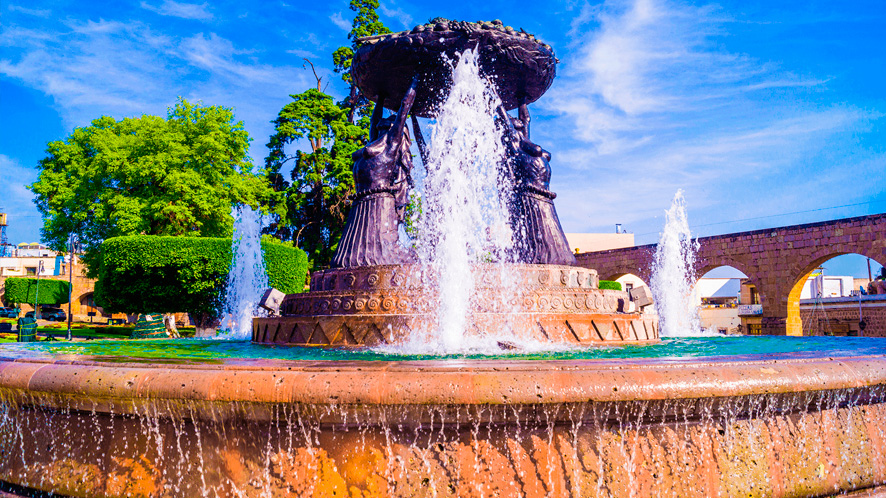At the meeting point of the Aqueduct and Calle Real, today Avenida Francisco I. Madero, is the most famous fountain in the city of Morelia: the Fuente de las Tarascas. A bronze sculpture dating from 1984, depicting three Purepecha women with their torso uncovered, carrying a large tray full of fruit, is speculated to refer to the indigenous princesses Atzimba, Eréndira and Tzetzangari.
In 1931, the municipal president of Morelia, Major Rafael Miguel Pedrajo, ordered the construction of the first Fuente de las Tarascas, the work of the plastic artist Antonio Silva Díaz and the sculptor Benigno Lara. The sculpture was made of cement and iron rods, adorned with different colours, placed on a fountain decorated with snails as a representation of man (in native hieroglyphics) that declared their handmade nature. This source remained in place for 34 years.
Just after the fountain was placed it had no name, and the people began to call it the Fountain of the Indies; later it took the name of “Fountain of the Tarascas” because it was the state of Michoacán, the purépecha territory par excellence, and according to Fray Bernardino de Sahagún, the Purépecha people were given the name of Tarasco.
At first, the image of three half-naked women was not very pleasing to the Morelians, but little by little it became part of the city and the people. At the beginning of 1967, the monument was removed from its place and moved to the State Public Works warehouse. The following year, it was taken to the city’s Fairgrounds, located at the exit to Salamanca.
The current Fuente de las Tarascas is the work of the sculptor José Luis Padilla Retana and was placed in its place on 18 May 1984, according to the plaque alluding to the fact that it was placed at the base of the sculpture.
As a curious fact, the old sculpture of Las Tarascas can be found in the current Exhibition Centre located at the exit to Charo.

